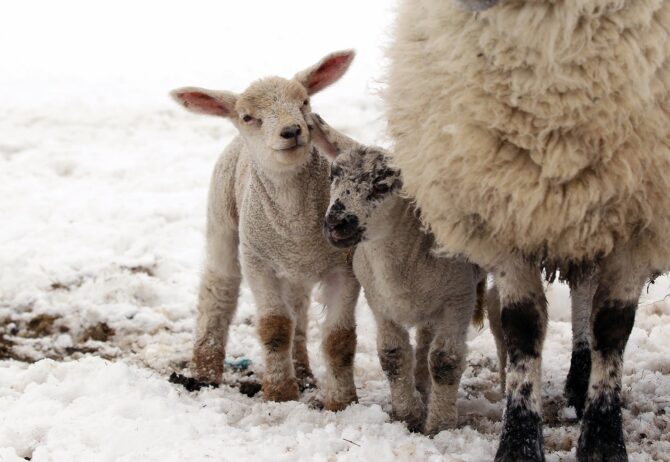We often think of our domestic pooches when talking about dogs, but the dog family goes beyond our homes.
Your adorable pet has some relatives you would not like to meet, especially if you’re alone in the woods at night.
The dog family is scientifically termed Canidae, and it regroups both domestic dogs and wild species.
Some experts argue that the domestic dog is a subspecies of the gray wolf, others state that it is a specie of its own.
We’re not focused on domestic dogs though. 35 wild dog species also belong to the Canidae family—including the Gray Wolf—and they are our focus.
It might interest you to know that the Canidae family is one out of several other families under the Carnivora order. There is the Felidae or cat family, the Ursidae (bear family), etc.
Different types of wild dogs can be found on every continent today, except Antarctica. Sadly, many of these wild dog species face extinction, and the number might dwindle in years to come.
Here is a compilation of the 35 types of wild dogs in our world today.
Wild Dog Species List: All Types Of Wild Dogs
1. African Golden Wolf (Canis Anthus/Canis Lupaster)
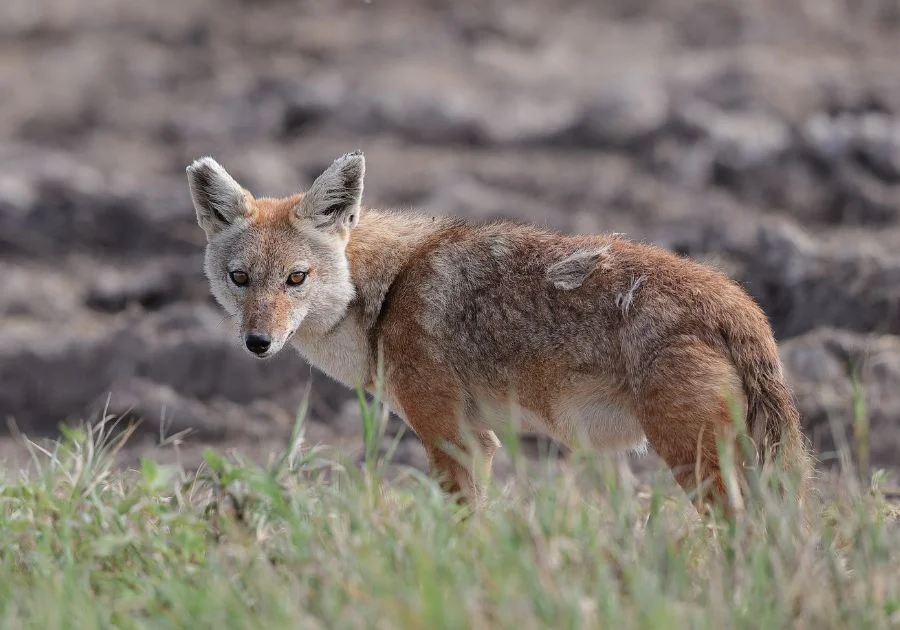
- Scientific Name: Canis Anthus/Canis Lupaster
- Height: 16 inches
- Weight: 15 to 33 pounds
- Found in: Africa
- Conservation Status: Least Concern
The African Golden Wolf hails from Africa, as its name shows. It can be found in countries like Egypt, Ethiopia, and Algeria.
It is small, even smaller than some domestic dogs like the Labrador Retriever and the Siberian Husky.
Its uniqueness is in its ability to live in an area with little water.
The coat of the African Golden Wolf isn’t always golden. Some sport a silver-grey coat, while others have the light brown one that’s considered gold.
The African Golden Wolf was once seen as the same as the Golden Jackal, but that has since changed.
2. African Wild Dog (Lycaon Pictus)

- Scientific Name: Lycaon Pictus
- Height: 30 inches
- Weight: 66 pounds
- Found in: Africa
- Conservation Status: Endangered
The African Wild Dog also hails from Africa and could be found in different colonies.
This species has a strong pack mentality, with the alpha male and female being at the top, then the offsprings follow.
Hunting is also done as a team, and they often hunted prey like antelopes.
It is a big wild dog, bigger than the aforementioned one, and if we were to use doggy terminology, we would call it a medium-sized species.
It has a unique coat that comes in patterns, a trait that earned it the alternate name of African Painted Dog.
There are currently around 1,500 African Wild Dogs left.
3. Arctic Fox (Vulpes Lagopus)

- Scientific Name: Vulpes Lagopus
- Height: 12 inches
- Weight: 21 pounds
- Found in: North America, Europe, Asia
- Conservation Status: Least Concern
The Arctic Fox is a survivalist that hails from the arctic regions of North America, Europe, and America.
It falls under the genus Vulpes, often referred to as “true foxes”.
It has a remarkable ability to adapt to a different climate, and even its coat changes alongside the weather. It gets white with winter and brown with summer.
The Arctic Fox has a short lifespan, and many do not live past the first year (though some get to 11).
It is about half the size of a Labrador, and it goes by other names like the White Fox, Polar Fox, or Snow Fox.
Some can be friendly but don’t expect this specie to ever get domesticated.
4. Bat-Eared Fox (Otocyon Megalotis)
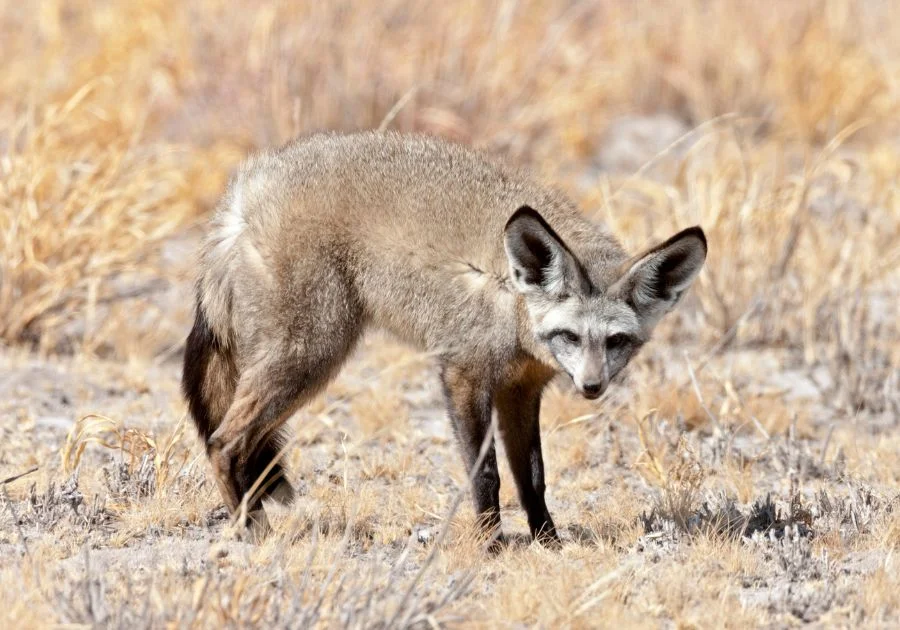
- Scientific Name: Otocyon Megalotis
- Height: 12 to 16 inches
- Weight: 7 to 12 pounds
- Found in: Africa
- Conservation Status: Least Concern
The Bat-Eared Fox hails from Africa, and it earned its name from its long, bat-shaped ears. This specie has a unique diet.
It is an insectivore, which means it eats mainly insects. Its ears help it pick up the sounds of termites around, and the teeth are well shaped to bite into insects.
The jaws also attest to the species’ insectivorous lifestyle. This is a small animal, and it would be classified as a small dog breed were it domesticated.
There is two Bat-Eared Fox population that are found in different locations.
One segment is in the Southern parts of Africa, while others reside in East Africa.
5. Bengal Fox (Vulpes Bengalensis)

- Scientific Name: Vulpes Bengalensis
- Height: 18 inches
- Weight: 5 to 9 pounds
- Found in: India
- Conservation Status: Least Concern
The Bengal Fox is also called the Indian Fox, and it is found only in the Indian subcontinent.
Its habitat is usually dry grasslands, and you may not find any in deserts and forests.
Its population has been decreasing, but the Bengal Fox isn’t endangered.
It is a “true fox”, and its appearance aligns with that.
The Bengal Fox is a social animal and lives in underground dens.
It is also a nocturnal specie by nature, though some members can be active when the sun isn’t high.
6. Black-Backed Jackal (Canis mesomelas)

- Scientific Name: Canis mesomelas
- Height: 15 to 19 inches
- Weight: 13 to 29 pounds
- Found in: Africa
- Conservation Status: Least Concern
The Black-Backed Jackal has been in existence since two to three million years ago and is one of the oldest Canid still in existence.
It earned its name due to the black fur that runs along its back, and while it can adapt to different habitats, its common places include savannas and deserts.
It is located in both the Southern and Eastern regions of Africa.
Besides the black back, this specie has a sandy orange color. The snout is pointed and the ears long, what you’d expect from a typical jackal—or a fox.
The Black Back Jackal is territorial and monogamous.
7. Blanford’s Fox (Vulpes Canal)

- Scientific Name: Vulpes Canal
- Height: 15 to 32 inches
- Weight: 2 to 4 pounds
- Found in: Middle East, Asia
- Conservation Status: Least Concern
The Blanford’s Fox is from the Middle East and South America.
It derived its name from a naturalist named William Thomas Blandford, and its habitats are the Middle East and Central Asia.
This is a highly nocturnal specie.
The Blandford’s Fox is very small, and the only Canid it is bigger than is the Fennec Fox. It is both insectivorous and omnivorous, with a vast diet.
8. Bush Dog (Speothos Venaticus)
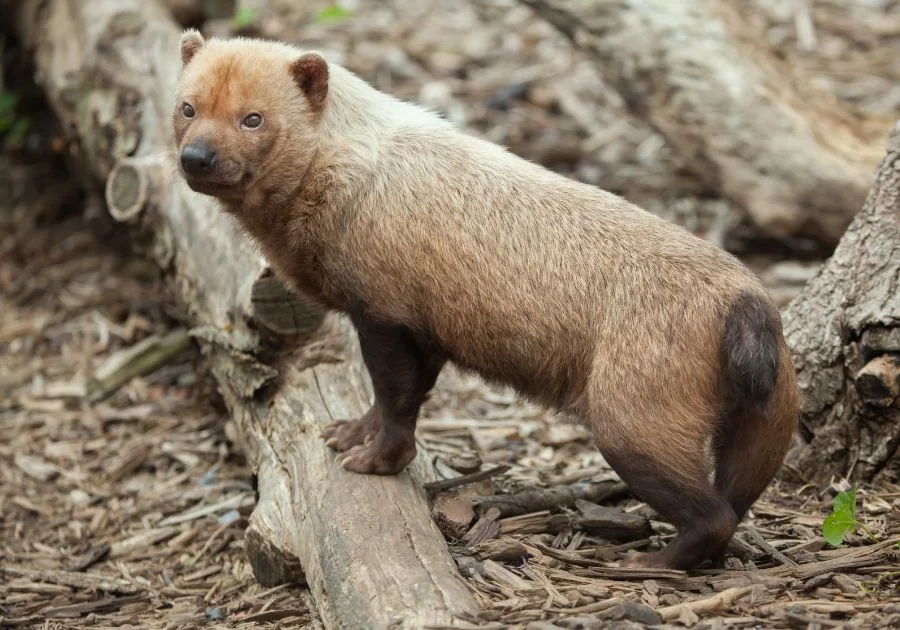
- Scientific Name: Speothos Venaticus
- Height: 8 to 12 inches
- Weight: 11 to 18 pounds
- Found in: South America
- Conservation Status: Near Threatened
The Bush Dog is not to be confused with the Crab Eating Fox, who’s sometimes called by the same name.
This Canid from South America is one of the rarest types of wild dogs, and its habitats include rainforests and savannas.
The Bush Dog’s status is “near threatened” due to habitat loss, a lack of prey species, and population fragmentation.
The Bush Dog is short due to its legs, but it has a long body and a short tail, almost like a badger.
The adult’s fur is a brownish tan, but younger ones come with a solid black coat. Its webbed toes enable it to navigate its habitat, and it is carnivorous.
9. Cape Fox (Vulpes Chama)
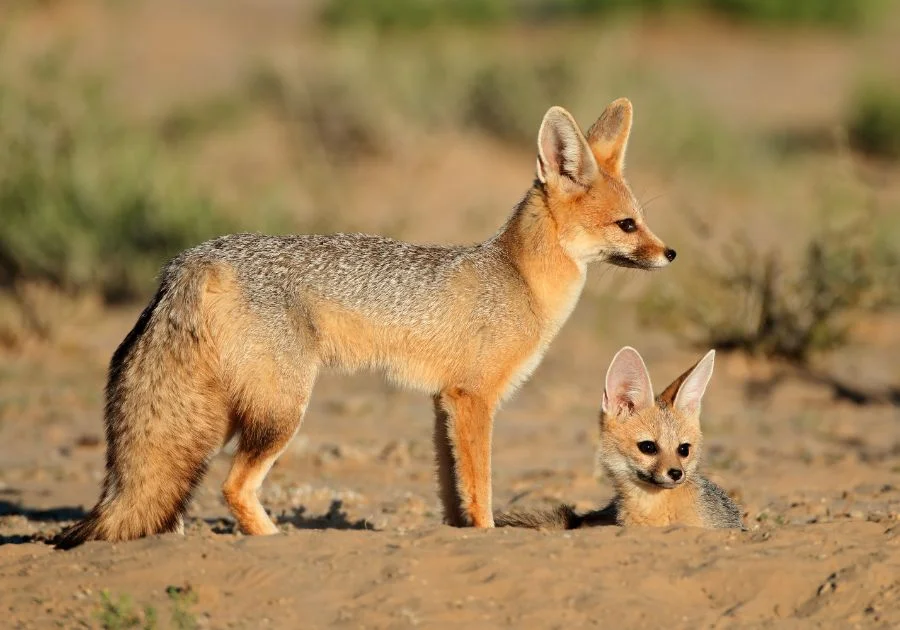
- Scientific Name: Vulpes Chama
- Height: 12 to 14 inches
- Weight: 6 to 10 pounds
- Found in: Southern Africa
- Conservation Status: Least Concern
Cape Fox is the only African Vulpes fox still in existence today. It is located in Angola, Botswana, Namibia, and South Africa.
You can find them in grasslands and semi-desert scrubs as their habitats. It is a common breed in Southern Africa, and that’s why its status is “Least Concern”.
The Cape Fox’s coat is a grey-brown with a streak of yellow and a black tail that’s both long and bushy.
It is nocturnal and would often be seen in the evenings and early mornings.
10. Corsac Fox (Vulpes Corsac)
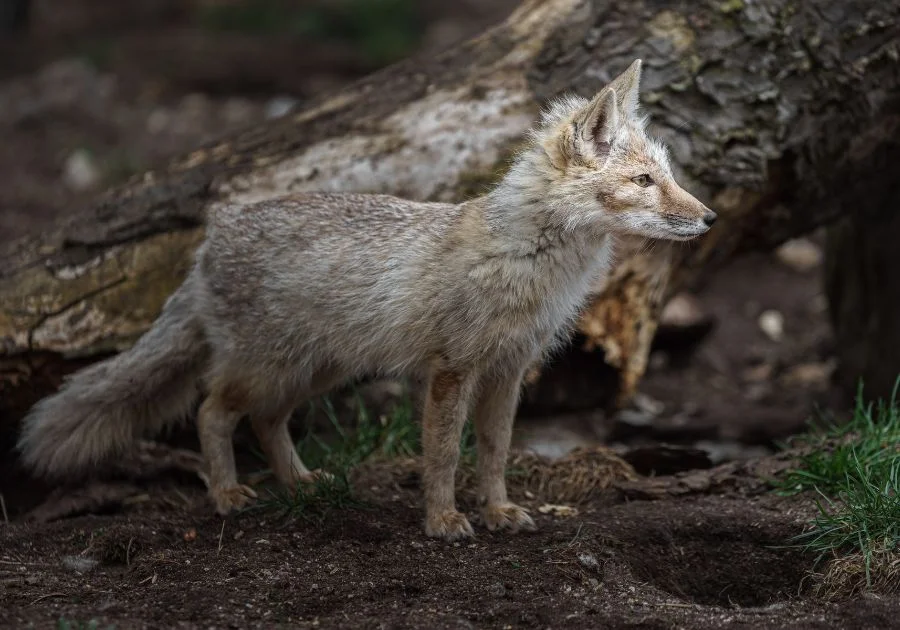
- Scientific Name: Vulpes Corsac
- Height: 18 to 26 inches
- Weight: 4 to 8 pounds
- Found in: Central Asia
- Conservation Status: Least Concern
The Corsac Fox is located in Central Asia, and it lives in grasslands, also called steppes. Due to its habitat, the Corsac Fox is also called the Steppe Fox.
The Corsac Fox is a regular target of hunters because of its fur, but its population remains at a healthy level.
The Corsac is a medium-sized fox, and its coat is long. The coat is also adaptable, and it thickens when winter draws close.
This specie is vocal and has an elevated sense of smell, sight, and sound.
11. Coyote (Canis Latrans)

- Scientific Name: Canis Latrans
- Height: 3 ft 3 to 4 ft 5 inches
- Weight: 15 to 44 pounds
- Found in: North America
- Conservation Status: Least Concern
The Coyote is another very common Canid, with 19 recognized subspecies.
Its population keeps growing in North America, and it can live in many habitats, including prairies and forests.
It is related to the Gray Wolf and shares similar traits, but it doesn’t shy away from human settlements like wolves do. Some Coyotes mate with wolves to produce hybrids called the “Coywolves”.
The Coyote also goes by the name Prairie Wolf, and its coat is either a light grey or red.
It is social, though not as tightly knitted as wolves. It is carnivorous as well, and it preys on deer, rabbits, rodents, hares, fish, etc.
12. Crab-Eating Fox (Cerdocyon Thous)
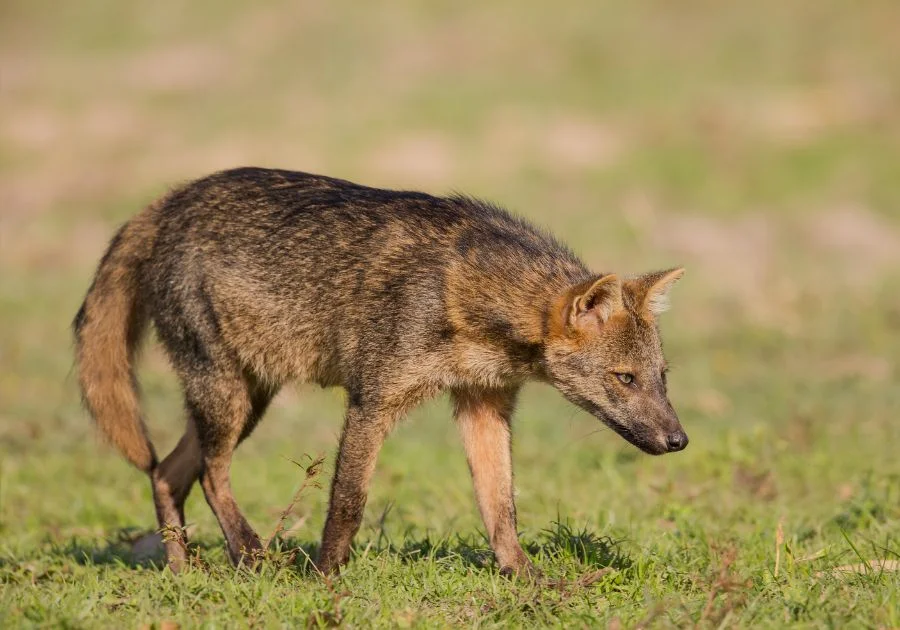
- Scientific Name: Cerdocyon Thous
- Height: 25 inches
- Weight: 10 to 17 pounds
- Found in: South America
- Conservation Status: Least Concern
The Crab-Eating Fox is a South American Canid that can be found in marshlands, savannas, forests, and a host of other habitats.
It is also known as the forest fox, the wood fox, the bush dog, and the maikong.
It is nocturnal specie, preferring to spend the day in its den and start its activities when the sun goes down.
The Crab-Eating Fox is one of the smallest wild dog species, a lot smaller than your medium-sized domestic dog. Crab is its main prey, as evident in its name.
However, it also has other prey, and it eats plants too. Indigenous people successfully domesticated the Crab-Eating Fox, and they keep it as a pet.
13. Culpeo (Lycalopex Culpaeus)

- Scientific Name: Lycalopex Culpaeus
- Height: 26 to 43 inches
- Weight: 6 to 12 pounds
- Found in: South America
- Conservation Status: Least Concern
Culpeo follows the Maned Wolf as the second-largest Canid in South America, and it is also known as the Zorro culpeo, Andean zorro, and the Andean fox.
As a Lycalopex or “false fox”, the Culpeo is more related to wolves and jackals than foxes.
The Culpeo’s coat is a grey red or yellow fur, with a bushy tail. Its habitats are numerous, and it can be found in areas like Southern Colombia and southern Chile.
14. Darwin’s Fox (Lycalopex Fulvipes)
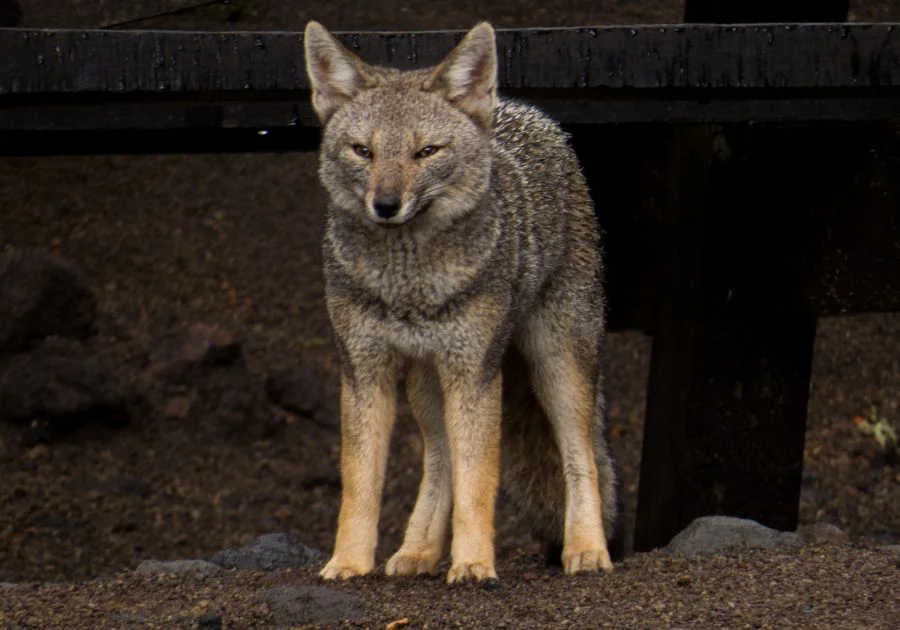
- Scientific Name: Lycalopex Fulvipes
- Height: 19 to 23 inches
- Weight: 4 to 9 pounds
- Found in: Chile
- Conservation Status: Endangered
The well-known naturalist Charles Darwin was credited with the discovery of this species, hence the name.
It is found only in Chile, specifically in these places: the Nahuelbuta National Park, the Valdivian Coastal Range, and the Island of Chiloé.
Domestic dogs are the main enemies of this species and a threat to their survival.
Darwin’s Fox is one of the smallest members of the dog family and is often hidden in forests. It is an omnivore and is known to have a vast diet.
15. Dhole (Cuon Alpinus)

- Scientific Name: Cuon Alpinus
- Height: 20 inches
- Weight: 22 to 46 pounds
- Found in: Asia
- Conservation Status: Endangered
The Dhole is located in Asia, specifically in the South and Southeast. It is adaptive and can be found in different habitats like rainforests and grasslands.
Dholes suffer from habitat loss, and that makes them endangered.
This is a big wild dog that resembles the Gray Wolf and domestic dogs, but its tail is bushy and furred, much like a fox.
It is a social animal and lives side by side with animals like the tigers and leopards.
16. Ethiopian Wolf (Canis Simensis)
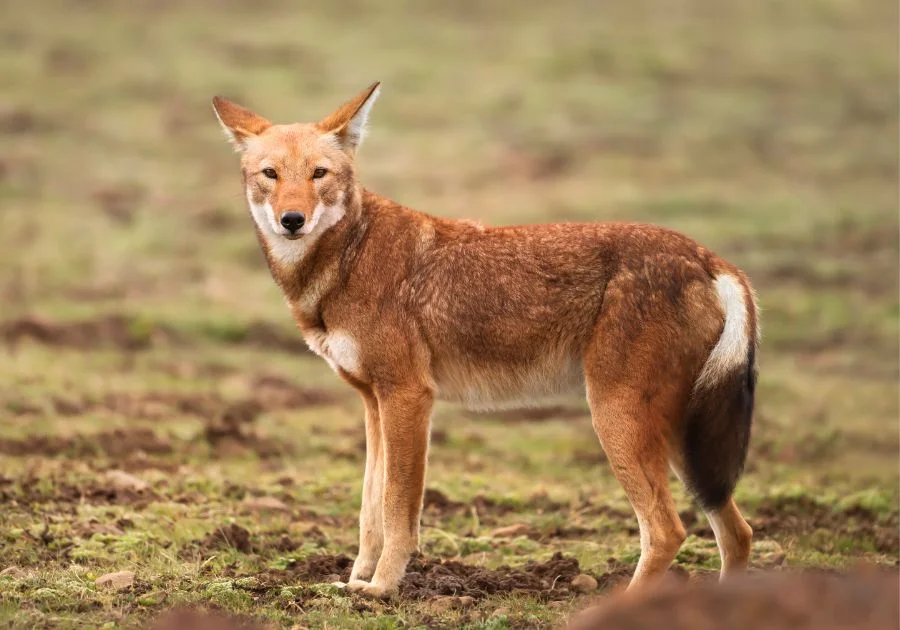
- Scientific Name: Canis Simensis
- Height: 21 to 24 inches
- Weight: 25 to 43 pounds
- Found in: Africa
- Conservation Status: Endangered
The Ethiopian Wolf is located only in Ethiopia, and you will find it in the mountainous areas of the country.
There are around 200 Ethiopian Wolves left, making it the world’s most threatened canid and Africa’s most endangered carnivore. This is happening largely due to habitat loss.
The Ethiopian Wolf has a red-brown coat with a streak of white on its chest, and its main prey is rodents. It is a social animal and is known to live in families.
17. Fennec Fox (Vulpes Zerda)
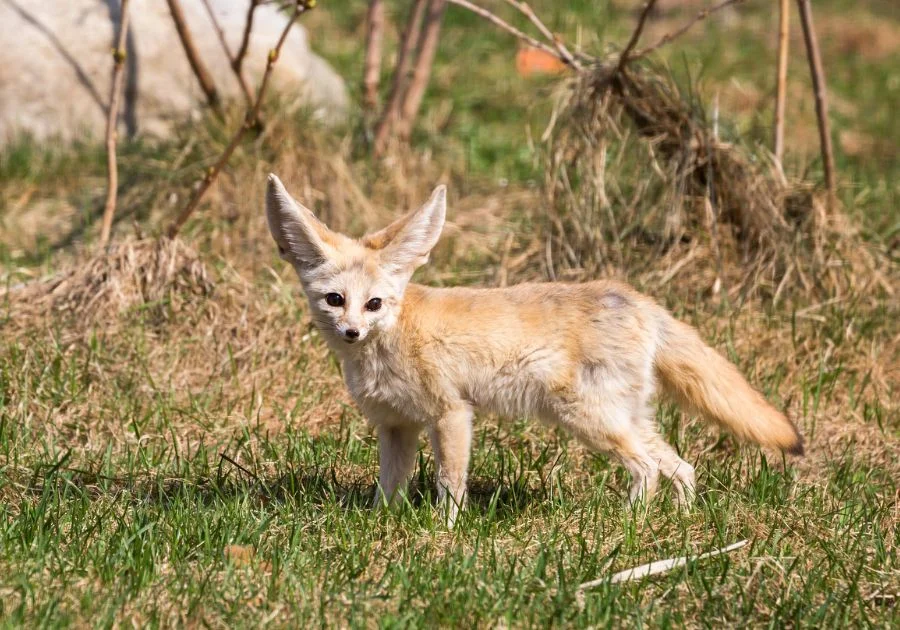
- Scientific Name: Vulpes Zerda
- Height: 14 to 16 inches
- Weight: 2 to 4 pounds
- Found in: Africa
- Conservation Status: Least Concern
Remember the Kit Fox? The Fennec Fox has large ears like the Kit Fox, and so both are usually compared.
The Fennec Fox is the smallest Canidae member and the smallest fox species.
You can find this wild dog in North Africa, specifically in the hot parts.
Like the Kit Fox, the Fennec Fox uses its large ears to control body heat and to hear prey.
To survive in the heated environment, the Fennec Fox has a coat colored orange white which helps it blend, and the coat reflects heat.
Its paws are covered in thick fur, enabling it to walk on hot surfaces.
18. Golden Jackal (Canis Aureus)

- Scientific Name: Canis Aureus
- Height: 18 to 20 inches
- Weight: 13 to 31 pounds
- Found in: Europe, Asia
- Conservation Status: Least Concern
The Golden Jackal is a member of the Jackal species which also consist of the Black-Backed Jackal and the Side-Striped Jackal.
However, it has the looks of a wolf and is more related to the Gray Wolf than other jackals. It can be found in Eastern Europe, the Middle East, and Asia.
Golden Jackals can adapt to different environments, from forests to grasslands.
Its main method of looking for food is scavenging, and because of the increasing population, it is at no risk of extinction.
19. Gray Fox (Urocyon Cinereoargenteus)
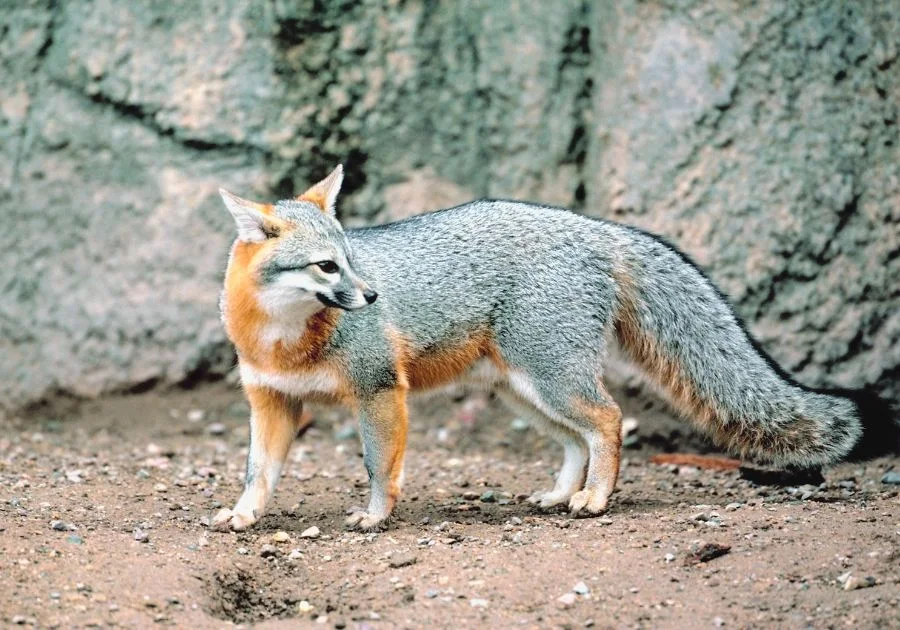
- Scientific Name: Urocyon Cinereoargenteus
- Height: 30 to 44 inches
- Weight: 8 to 15 pounds
- Found in: North and South America
- Conservation Status: Least Concern
The Grey Fox (or Gray Fox) is located in both North and South America, in particular the southern part of Canada and the northern parts of South America.
It lives in different habitats, including forests, rocky terrains, and scrublands.
You can also find it in the United States, especially in the Pacific states where it is popular.
The Gray Fox’s coat is a mixture of grey, black, and a pale shade of orange, along with fur that runs throughout its back.
Its uniqueness comes from the ability to climb trees, and in America, it is the only canid that can do that.
20. Gray Wolf (Canis Lupus)

- Scientific Name: Canis Lupus
- Height: 31 to 33 inches
- Weight: 26 to 175 pounds
- Found in: North America, Europe, Asia
- Conservation Status: Least Concern
The Gray Wolf, simply called Wolf, is considered the ancestor of domestic dogs.
It has many subspecies, and as we mentioned at the start, experts are divided as to whether domestic dogs should be considered subspecies of the Gray Wolf.
Either way, it is the largest extant member in the Canidae family, and perhaps the most popular.
It used to be the most widely spread, till the Red Fox took over.
The Gray Wolf’s size varies, as well as its appearance. European wolves are usually larger than those in North America.
As many people already know, wolves are pack animals. The pack mentality some domestic dogs have is linked to the Gray Wolf.
This specie has a wide diet, from large animals to small birds. It is also territorial.
21. Hoary Fox (Lycalopex Vetulus)
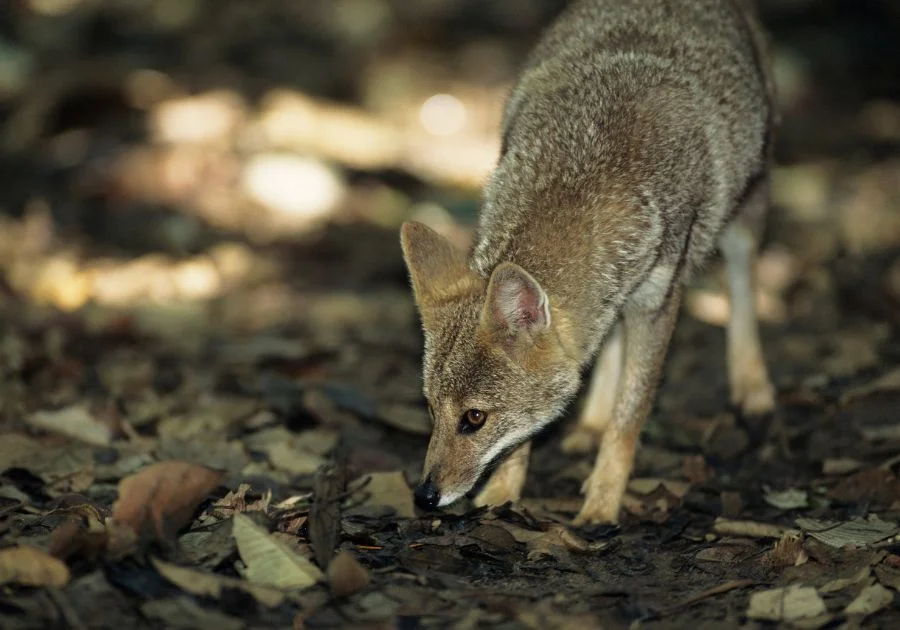
- Scientific Name: Lycalopex Vetulus
- Length: 23 to 28 inches
- Weight: 6 to 8 pounds
- Found in: Brazil
- Conservation Status: Near Threatened
Hoary Fox is limited to Brazil, unlike some others on this list with wider ranges. It can be found in the savannas of cerrado, located in Central Brazil.
It is a “false fox”, belonging to the genus Lycalopex. This species isn’t in danger of extinction, but its number is being threatened.
The hoary Fox is a small, nocturnal species that differs from many other foxes in its eating habits.
It is an insectivore, though it can also make dinner (or breakfast for it?) out of birds and rodents.
It has a short muzzle, slender limbs, a small set of teeth, and a short coat that sticks close to its body.
22. Island Fox (Urocyon Littoralis)
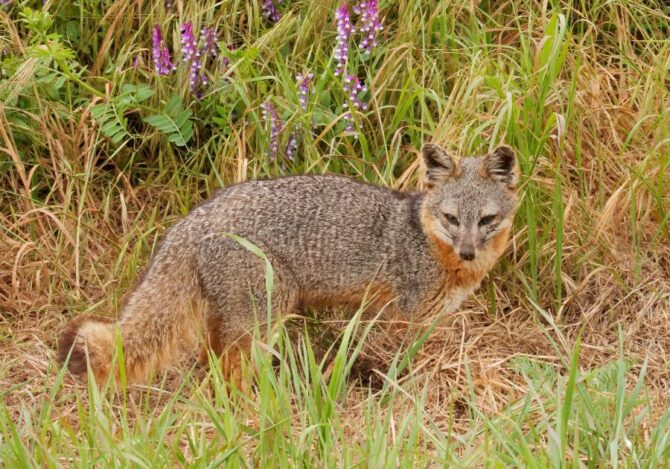
- Scientific Name: Urocyon Littoralis
- Height: 5 to 7 inches
- Weight: 2 to 6 pounds
- Found in: United States
- Conservation Status: Near Threatened
The Island Fox is a descendant of the Gray Fox, and it lives in California. There are 8 channel islands off the Californian coast.
On 6 of them, the Island Fox resides. In the 1990s, the Island Fox was highly endangered.
That has since changed with some conservation programs, but they remain threatened.
The Island Fox is small as a result of insular dwarfism. This often affects animals living on islands.
They adapt to their environments by becoming smaller than animals on the mainland.
It is an omnivore, and its diet consists of fruits, birds, insects, eggs, lizards, and eggs. The Island Fox can be tamed.
23. Kit Fox (Vulpes Macrotis)
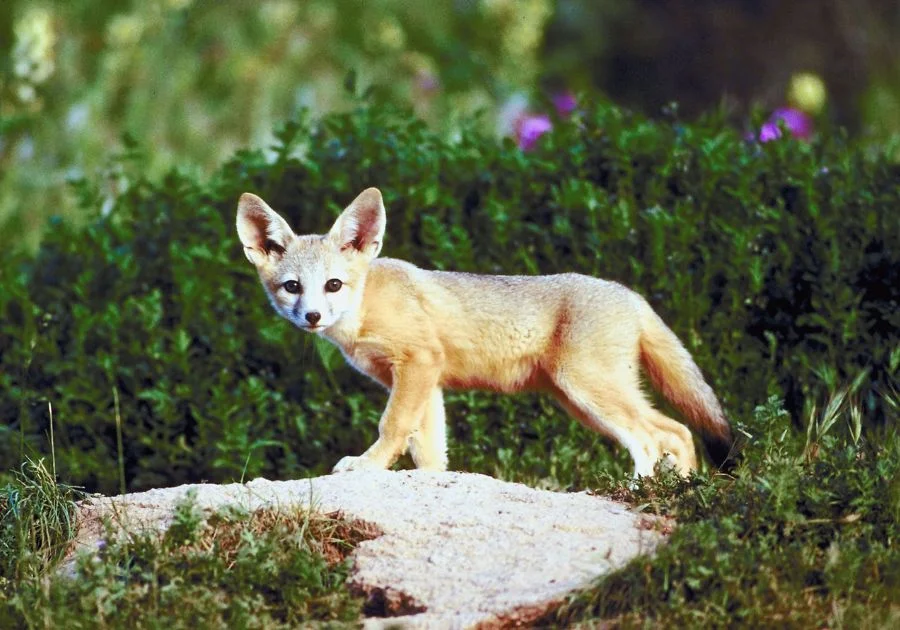
- Scientific Name: Vulpes Macrotis
- Height: 3 to 4 inches
- Weight: 4 to 7 pounds
- Found in: North America
- Conservation Status: Least Status
The Kit Fox is one of the smallest Vulpes foxes in the world, and it is one of the smallest Canids in North America.
It is often found in the desert habitats of the United States and Mexico. The large ears of the Kit Fox aren’t for decor.
It helps regulate its body temperature and is an asset for its survival in the desert.
The Kit Fox is usually compared to the Fennec Fox, another wild specie because both have big ears.
Other physical traits of the Kit Fox include a long tail, a yellowish-gray coat with grizzles, and hairs on the soles.
24. Maned Wolf (Chrysocyon Brachyurus)

- Scientific Name: Chrysocyon Brachyurus
- Height: 35 inches
- Weight: 44 to 66 pounds
- Found in: South America
- Conservation Status: Near Threatened
The Maned Wolf is the biggest of the dog family in South America, and it also holds the record of being the tallest canid.
It lives in grasslands and open woodlands found in South American countries like Argentina, Bolivia, Brazil, and Peru.
The Maned Wolf is usually compared to the Gray Wolf, for obvious reasons.
The Maned Wolf is taller than the Gray Wolf, but also lighter. It has a unique form with its long legs, reddish-brown coat, and bushy mane.
25. Pale Fox (Vulpes Pallida)

- Scientific Name: Vulpes Pallida
- Height: 15 to 22 inches
- Weight: 4 to 8 pounds
- Found in: Africa
- Conservation Status: Least Concern
The Pale Fox lives close to the Sahara desert, in the dry and sandy areas that stay south of the desert.
It is often found in Senegal and Sudan, and very few studies have been done on this breed.
What we do know is that the Pale Fox has a sandy coat that serves as camouflage in the desert areas.
It is also small, with short legs, a long body, and a bushy tail.
The Pale Fox is nocturnal. It rests during the day and roams at night.
26. Pampas Fox (Lycalopex Gymnocercus)

- Scientific Name: Lycalopex Gymnocercus
- Height: 20 to 31 inches
- Weight: 5 to 18 pounds
- Found in: South America
- Conservation Status: Least Concern
Pampas Fox can be found in the South American Pampas, located in Argentina, Brazil, and Uruguay.
It is a member of the genus Lycalopex, the “false fox”, and some experts consider it to be the same as the South American Gray Fox.
There doesn’t seem to be a consensus on that yet. The Pampas Fox is small, and though it is a “false fox”, it looks a lot like a regular fox.
It has the characteristic bushy tail of a fox, a pointed snout, and erect ears. Its fur is short, dense, and grey.
27. Raccoon Dog (Nyctereutes Procynoides)
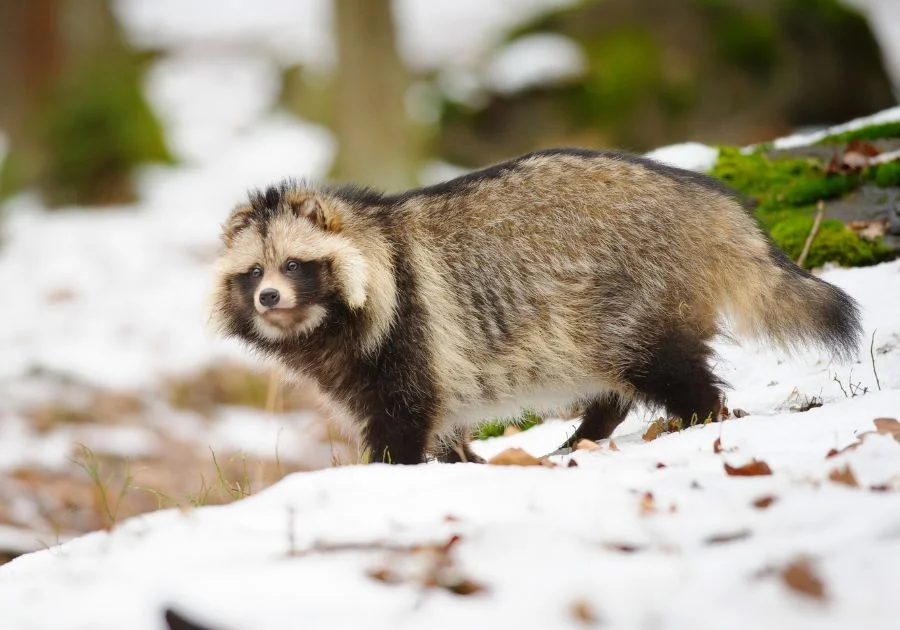
- Scientific Name: Nyctereutes Procynoides
- Height: 18 to 28 inches
- Weight: 7 to 22 pounds
- Found in: Europe, Asia
- Conservation Status: Least Concern
The Raccoon Dog is similar to a raccoon, and it looks different from other members of the dog family.
It originally lived in East Asia until the early 20th century when it got imported into Western Europe.
From there it began to spread, getting into countries like Spain.
The Raccoon Dog’s weight changes as the seasons do. While in March it is at almost 7 pounds, during September it will get up to 15 or 20 pounds.
The Raccoon Dog is one of the few canids that can climb a tree, and it is an omnivore.
28. Red Fox (Vulpes Vulpes)

- Scientific Name: Vulpes Vulpes
- Height: 14 to 20 inches
- Weight: 5 to 31 pounds
- Found in: North America, Europe, Asia, North Africa, New Zealand, Australia
- Conservation Status: Least Concern
The Red Fox is highly popular, and as a land mammal, it tops the list of widely distributed animals.
It surpasses the house mouse and the brown rat, touching all the continents except Antarctica.
The Red Fox belongs to the genus Vulpes, the “true fox”, and it is the largest.
Its coat is a distinct red—with the chest being white—and has a bushy tail.
It is highly adaptable, and it is one wild specie that has been known to coexist with humans. This explains its popularity and range.
29. Rüppell’s Fox (Vulpes Rueppelli)
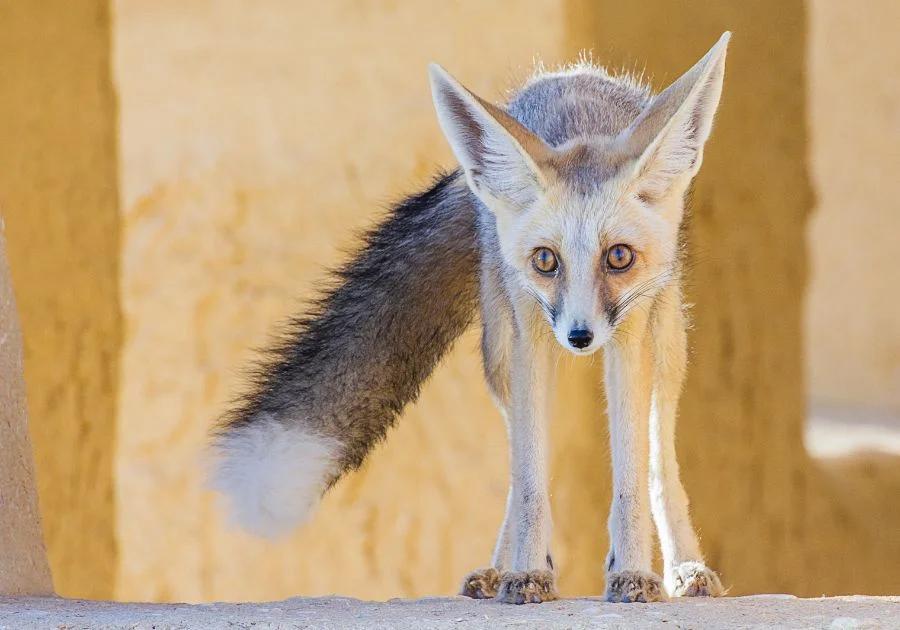
- Scientific Name: Vulpes Rueppelli
- Height: 26 to 29 inches
- Weight: 4 pounds
- Found in: North Africa, Middle East
- Conservation Status: Least Concern
Rüppell’s Fox can be found in the desert areas of North Africa and the Middle East.
It is a desert fox in nature, and it was named after Eduard Rüppell, a German Naturalist. Rüppell’s Fox is a “true fox”, and one of the small ones.
The Rüppell’s Fox coat reflects the desert environment.
It is pale and has a sandy color, with a good number of white hairs all over it. The fur is soft and fluffy to the touch.
30. Sechuran Fox (Lycalopex Sechurae)
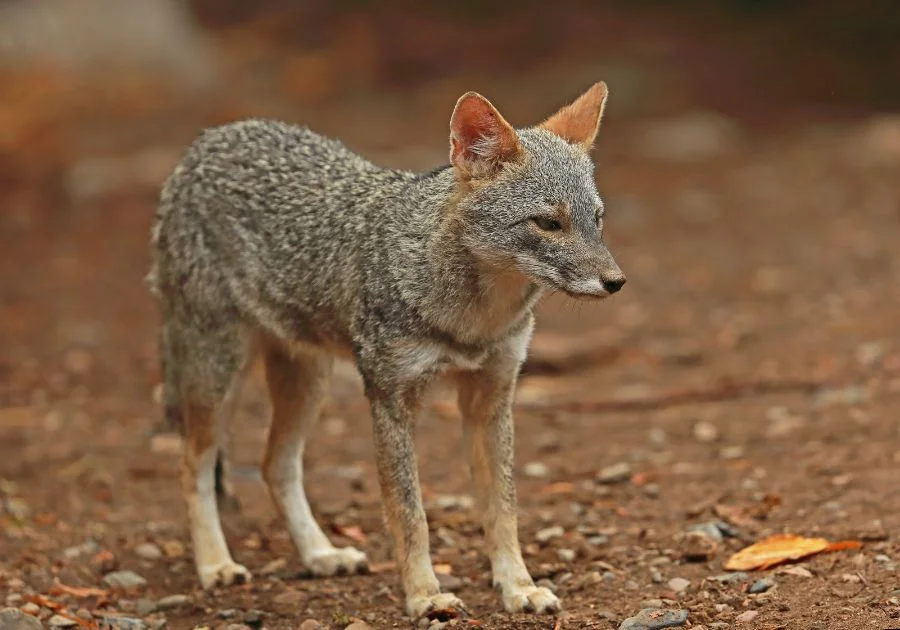
- Scientific Name: Lycalopex Sechurae
- Height: 20 to 31 inches
- Weight: 6 to 10 pounds
- Found in: South America (Peru & Ecuador)
- Conservation Status: Near Threatened
The Sechuran Fox is categorized under the genus Lycalopex, also called Zorro or “false fox.”
It can be found in forests, grasslands, and deserts in Ecuador and Peru.
Like the Short-Eared Dog, the Sechuran Fox is near threatened because of habitat problems.
The Sechuran Fox is a very small Canid with a pale, yellow-grey coat.
It feeds mainly on insects and plants and may survive with only plants, unlike many other wild species.
31. Short-Eared Dog (Atelocynus Microtis)

- Scientific Name: Atelocynus Microtis
- Height: 33 inches
- Weight: 19 pounds
- Found in: South America
- Conservation Status: Near Threatened
The Short-Eared Dog can be found in the Amazon rainforest in Colombia, Ecuador, Peru, Brazil, and Bolivia.
It bears a resemblance to bears, and it has a secretive lifestyle.
Thus, it is rarely seen. This species is near threatened because of habitat problems.
The Short-Eared Dog has small ears and is taller than it is weighted.
Its coat is short and dark, and its paws are slightly webbed, suggesting that it can adapt to water.
This specie is also known as the short-eared zorro or small-eared dog.
32. Side-Striped Jackal (Lupullela Adusta)

- Scientific Name: Lupullela Adusta
- Height: 14 to 20 inches
- Weight: 14 to 31 pounds
- Found in: Africa
- Conservation Status: Least Concern
The Side-Striped Jackal is so named because of the stripes on its body, similar to domesticated dogs like the Rhodesian Ridgeback being named because of the ridge that runs along its back.
The Side-Striped Jackal can be found in sub-Saharan Africa. It falls under the genus Canis.
There are other jackals the Side-Striped Jackal is related to, all under the Canis genus.
The Golden Jackal and Black-Backed Jackal (both on this list) are examples.
The Side-Striped Jackal is omnivorous, as it sometimes eats fruits.
33. South American Gray Fox (Lycalopex Griseus)

- Scientific Name: Lycalopex Griseus
- Height: 26 to 43 inches
- Weight: 6 to 12 pounds
- Found in: South America
- Conservation Status: Least Concern
The South American Gray Fox is a member of the Lycalopex genus and is currently the most common.
You will find more of them in Chile and Argentina, and their habitat is mainly grasslands.
Some experts see this specie and the Pampas Fox as the same, just as we mentioned above.
The South American Gray Fox coat is considered prized, and many hunters target this specie for the coat.
However, its population hasn’t gone drastically down.
34. Swift Fox (Vulpes Velox)
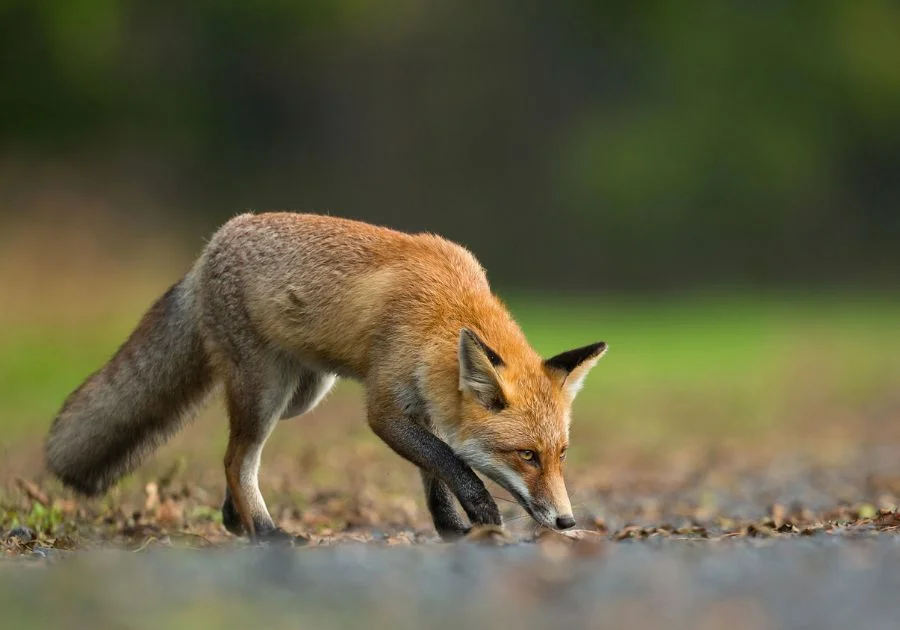
- Scientific Name: Vulpes Velox
- Height: 12 inches
- Weight: 5 to 7 pounds
- Found in: United States
- Conservation Status: Least Concern
The Swift Fox is also a true fox, and it can be found in the prairie grasslands of the Great Plains region of the United States.
Some are also located in Southern Canada. It was once threatened with extinction in the early 20th century but got saved by conservation moves.
The Swift Fox is the size of a domestic cat, and its fur is a pale yellow and white.
This species is an omnivore, with a diet that consists of both vegetables (or fruits) and small animals.
35. Tibetan Sand Fox (Vulpes Ferrilata)

- Scientific Name: Vulpes Ferrilata
- Height: 24 to 28 inches
- Weight: 9 to 12 pounds
- Found in: Asia
- Conservation Status: Least Concern
The Tibetan Sand Fox is a Vulpes (true fox) species, much like the Arctic Fox.
It originated from Asia where it lived on the grasslands of the Tibetan plateau.
The Tibetan Sand Fox looks like the average Fox, complete with a reddish-gray coat and a bushy tail.
The Tibetan Sand Fox preys on the plateau Pilka, a small animal that inhabits the same region.
It also hunts lizards, rodents, hares, and marmots. It sometimes has a symbiotic relationship with bears in terms of food.
While bears draw out the Pilka, foxes do the grabbing.
Honorable Mentions: Other Wild Dog Species & Subspecies
Besides the 35 major wild species above, here are some others worth including:
Cozumel Fox
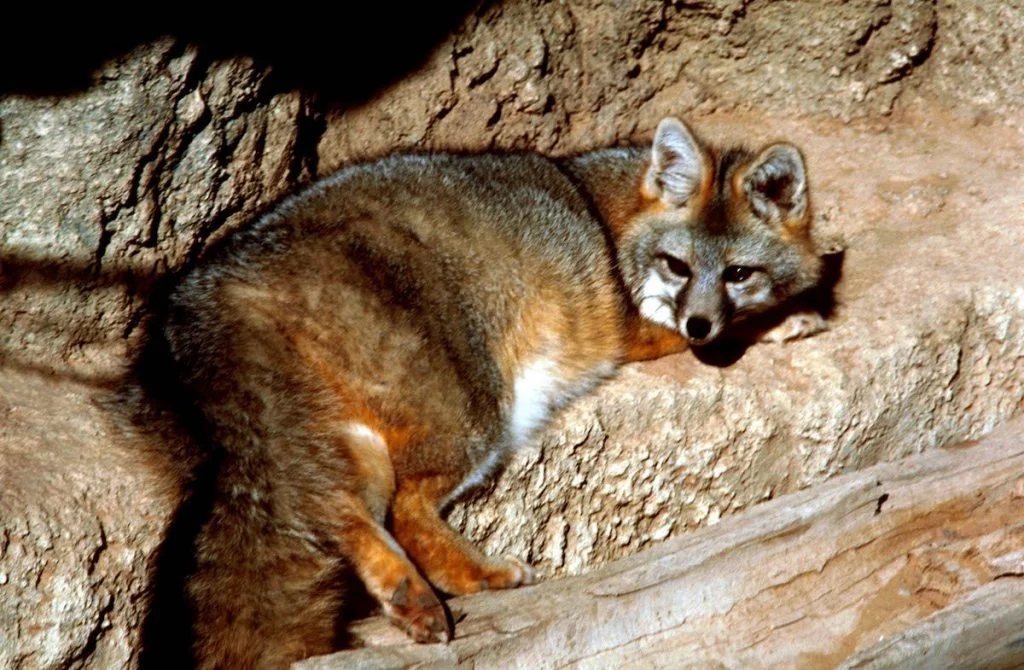
- Scientific Name: Not Described
- Found in: Mexico
- Conservation Status: Unaccessed
The Cozumel Fox has little information on it, and as of 2001, it was only found on a Mexican Island named Cozumel.
It is related to the Gray Fox and the Island Fox, and it might have gone extinct.
Dingo (Canis Familiaris, Canis Familiaris Dingo, Canis Lupus Dingo)
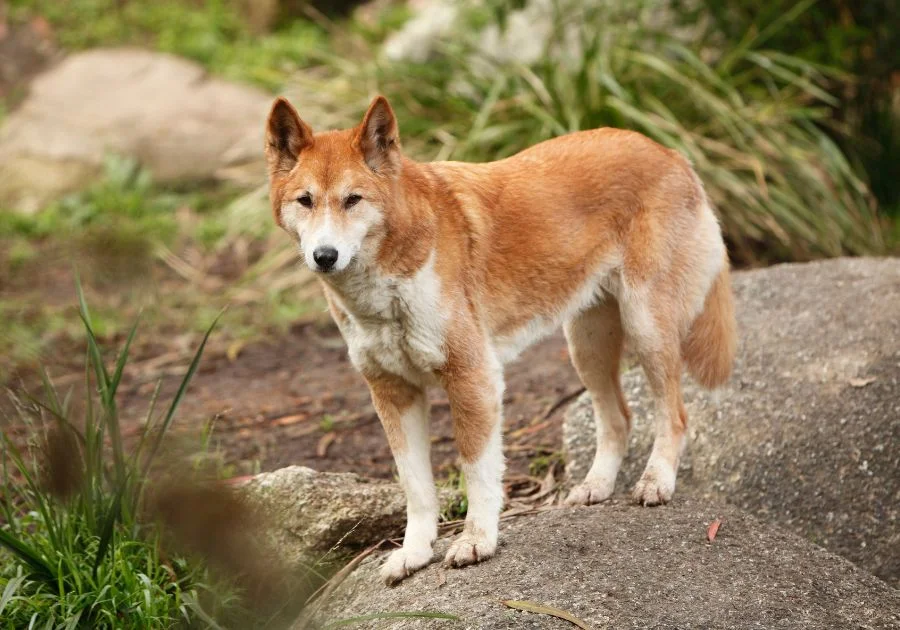
- Scientific Name: Canis familiaris, Canis familiaris dingo, Canis lupus dingo
- Height: 20 to 23 inches
- Weight: 22 to 33 pounds
- Found in: Australia
- Conservation Status: Domestic, Unassessed
Dingo has three scientific names, the Canis familiaris, Canis familiaris dingo, and Canis lupus dingo.
It is an Australian wild dog that lives in grasslands and deserts. The Dingo is also considered the largest predator in Australia.
While the conservation status of the dingo is domestic, it is still under debate.
Its ancestors are domestic dogs, but experts are undecided as to whether the dingo is a domestic dog, a subspecies of the domestic dog, or the subspecies of the Gray Wolf.
Domestic Dogs (Canis Familiaris)

- Scientific Name: Canis familiaris, Canis lupus familiaris
- Height: 5 to 43 inches
- Found in: Worldwide (except Antarctica)
- Conservation Status: Domestic
The scientific name of the domestic dog is either Canis familiaris or Canis lupus familiaris, depending on whether you consider it a subspecies of the Gray Wolf or a specie of its own.
The domestic dog is related to the Gray Wolf, and when some wolves got domesticated about 10,000 years ago, that laid the foundation for domestic dogs.
There are currently over 700 million dogs alive today. They play many roles which include companionship, work, security, and service to the disabled.
Some dog breeds still look a lot like their ancestors, others have taken unique shapes. The conservation status of the domestic dog is domestic.
Red Wolf (Canis lupus rufus, Canis rufus)
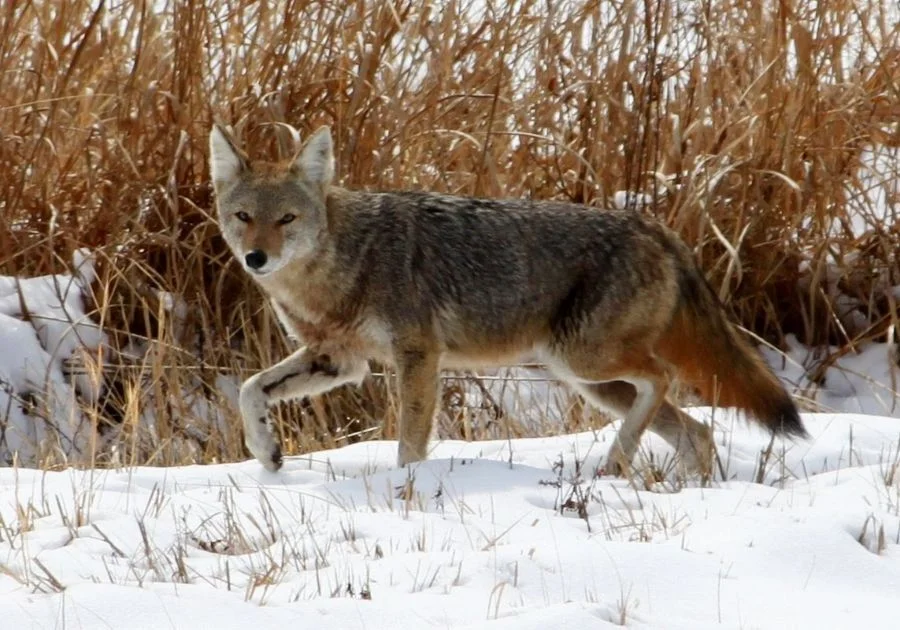
- Scientific Name: Canis lupus rufus, Canis rufus
- Found in: United States
- Conservation Status: Critically Endangered
The Red Wolf’s scientific names are Canis lupus rufus and the Canis rufus. It is found in the southeastern United States, and it is a big Canid.
The Res Wolf is critically endangered, and in the 1980s it was declared extinct.
While that got revoked, there are only about 20 to 30 red wolves left.
The Red Wolf has close ties with the Gray Wolf and the Coyote.
Many experts don’t recognize the Red Wolf as a specie of its own, preferring to term it a hybrid or a subspecies.
FAQs
What is the biggest wild dog?
The Gray Wolf is considered the biggest wild dog, and also one of the most common.
Very few animals can stand up to a wolf, and its biggest enemies are usually humans.
How many species of canines are there?
There are 35 recognized canine species in the world day, as well as a vast number of subspecies and hybrids.
Domestic dogs aren’t yet counted amongst the 35 species, because of the debates surrounding them.
What is the rarest wild dog?
Currently, the rarest recognized canine specie is the Ethiopian Wolf, a specie that’s highly vulnerable to rabies.
It also suffers from habitat loss as human civilization expands. There are only about 200 left.
Final Thoughts
The animal world is an interesting place, and there are so many facts to discover within.
Your pooch belongs to a vast family, complete with species, subspecies, and hybrids.
We’ve successfully looked into the 35 main types of wild dogs, and we hope that these wild dog species remain conserved, especially the threatened and endangered ones.
Check out these interesting articles on Animal Vivid:



